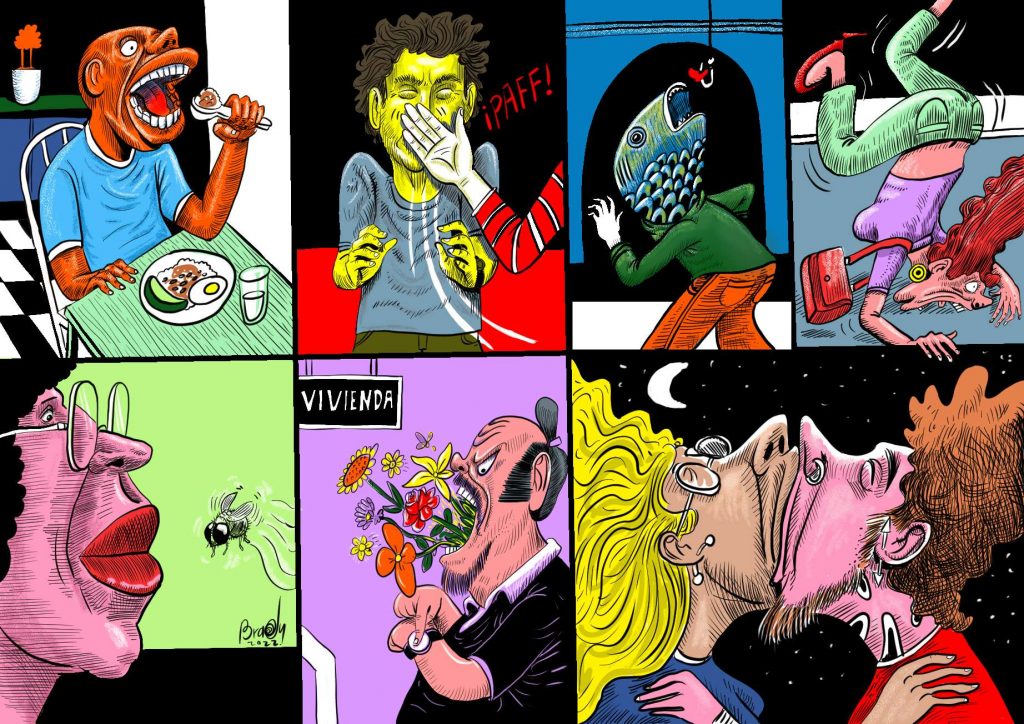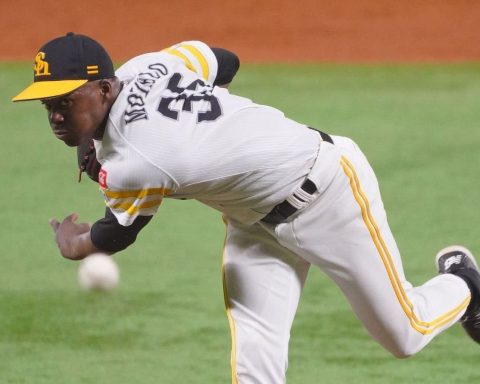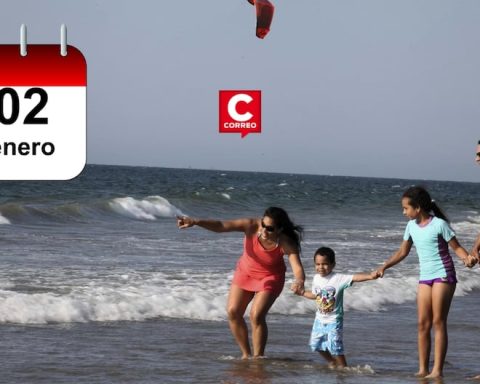Sometimes the best reserves for the linguistic imagination are very close to us. Let us look today, for example, at our own body and think for a moment how many of its parts, external or internal, have been progressively integrated into various forms of daily communication. If you like, we can go down in an orderly fashion from head to toe.
It is not strange that the head, as a whole, is associated with thought, with judgment, with reasoning… Thus, we can find numerous formulations around these ideas: lose one’s head (lose one’s judgment, literally and metaphorically), have a bad head (obscuration, annoyance ), walk without a head (act with little judgment), be stubborn (be stubborn), go headbutting (confront constant setbacks in life), build a beachhead (initial nucleus to generate a conflict), jump headfirst (rush ), go head (to be sent without excuse to a place), go head (to lead a race or a process), be the visible head (leadership), head up (prosper), play head (evade someone with tricks ). An alternative way to refer to the head is the word skull, also incorporated into various phrases: “No skull!” or “there is no skull” indicate that an issue does not merit concern or care, that it does not hurt feelings; while “become a skull” or simply “what a skull” reinforce an issue or person that is thought of repeatedly and even with devotion.
Let us think about the integral parts of the head and the appropriations that derive from them. Of the hairs we have: a close call (ultimately almost miraculous: a narrow escape, a narrow pass, a close win), not mincing words (to be honest), not seeing someone’s hair ( highlights the absence of a person), having hair on the armpit or on the ass (to indicate who is no longer a child), combing gray hair (being an older adult). The baldnesson the other hand, is integrated into almost always negative formulations: do not paint something so bald (do not accentuate the negative or adverse aspect of an issue) or leave someone bald (spend their money or resources).
Two significant elements in the head are the expensive and the eyes. The face represents the body, it gives it identity, which is why it often replaces the person as a whole. Someone who is said to “have no face”, is because he lacks shame (being, in essence, a “shameless”); and you can “grab your face to sit” (act shamelessly), or “walk to the face” (without camouflaging something improper). There are also those who “pull with their faces” (slack off or are absent from a duty with hardly credible justifications: a “face ‘e glove” or a “cheek”). And whoever strives for a result or duty of others is the one who “shows his face”, and if he faces guilt then “shows his face”, and if sincerity is desired, one is asked to say things “to his face”, and in the era of cassettes and vinyl there were songs on both sides. No less productive are the appropriations related to the eyes, the territory of the gaze and the projection of feelings: cast an evil eye (wish for bad fortune), cast an eye on something (watch over, take care of), cast an eye on something (locate something that is desired), see through the eyes of another (be very attentive to the needs of another person), eat with the eyes (gluttony or lewdness), eye! and oh boy! (be careful), be in the eye of the hurricane or storm (place yourself in the middle of a conflictive situation), give an eye to see the other blind (envy), cost an arm and a leg (excessive price), they were the eyes looking up from something (to divert attention to an object or person), to have eyes only for one person (to be faithful), to be all eyes (to be vigilant), to measure by eye (approximately) and, due to their shape, also It has an eye, the ass and even the sexual organs. As we have spoken of them in other texts, we will not mention them here, since they are a whole universe in themselves.
Another point of attraction on the face is the mouth, part of the body that has flourished in numerous appropriations: having a good mouth (who eats everything), a tapaboca (hitting the mouth with the palm of the hand), dying through the mouth (who eats a lot), in mouth closed flies do not enter (do not gossip), go out of mouth (fall forward, talk too much), take someone’s mouth (kiss), face down-face up (positions of the body on a surface), gape (being hungry) , what a mouth you have (of someone gossiping), having your mouth salá (predicting negative events), letting go of flowers through your mouth (saying bad words or yelling), manga mouth (entrance of the arm into a garment), point blank (directly , without warning), the pit of the stomach (junction of the stomach and the esophagus), fill the mouth to say something (bragging). And also as part of the mouth are the language and the teeth. By extension, language is a representation of speech, by excess or by default: gossip (talking too much or revealing a matter ahead of time), loose tongue (which says everything), a tongue that drags you (gossip), stick your tongue out (talk a lot), swallow your tongue (don’t speak, shut up), the mice ate your tongue (shyness, shyness in speaking or communicating), what kind of tongue do you have (who makes a show of speaking ill of others), having something on the tip of the tongue (lapsus mentis). In the case of teeth, you can: mumble (mutter), put your teeth into something (try a food, have emotional or sexual relations with a person); and alluding to even more specific dental areas: cross-eyed molar (demagoguery, gossip), give a molar (converse), be a muleteer (very talkative), be worse than a toothache (unpleasant or annoying matter or person), sharpen one’s fangs ( prepare for a desired matter), or be further behind the wisdom teeth (falling behind in understanding or knowledge of something, foolishness, slow to react).
Finishing with the upper part of the body, we can find very eloquent and widely used appropriations, such as having someone “between eyebrow and eyebrow”, indicating that this person stands in the way of resolving an issue, persists in being annoying, or is viewed as a permanent problem. If a negative situation seems to involve us or serves as a warning against bad decisions or actions, then it is said that we must “put the beards soak”. While the ears (or “guatacas”, as they are called in the countryside) monopolize the formulations related to the notions of listening, understanding or paying attention: give ear (not pay attention, ignore), be all ears (listen with absolute attention), pull the ears (scold, draw attention to something improper, warning), sharpen the ears or the guatacas (prick the ear).
We have taken a long detour and barely left the top of the “skeleton”. we arrived at neck and hopefully we do not form a bottleneck. That is why I propose you to continue descending body down and tongue up in the next installment, to continue finding wonderful corners of our anatomy.

















